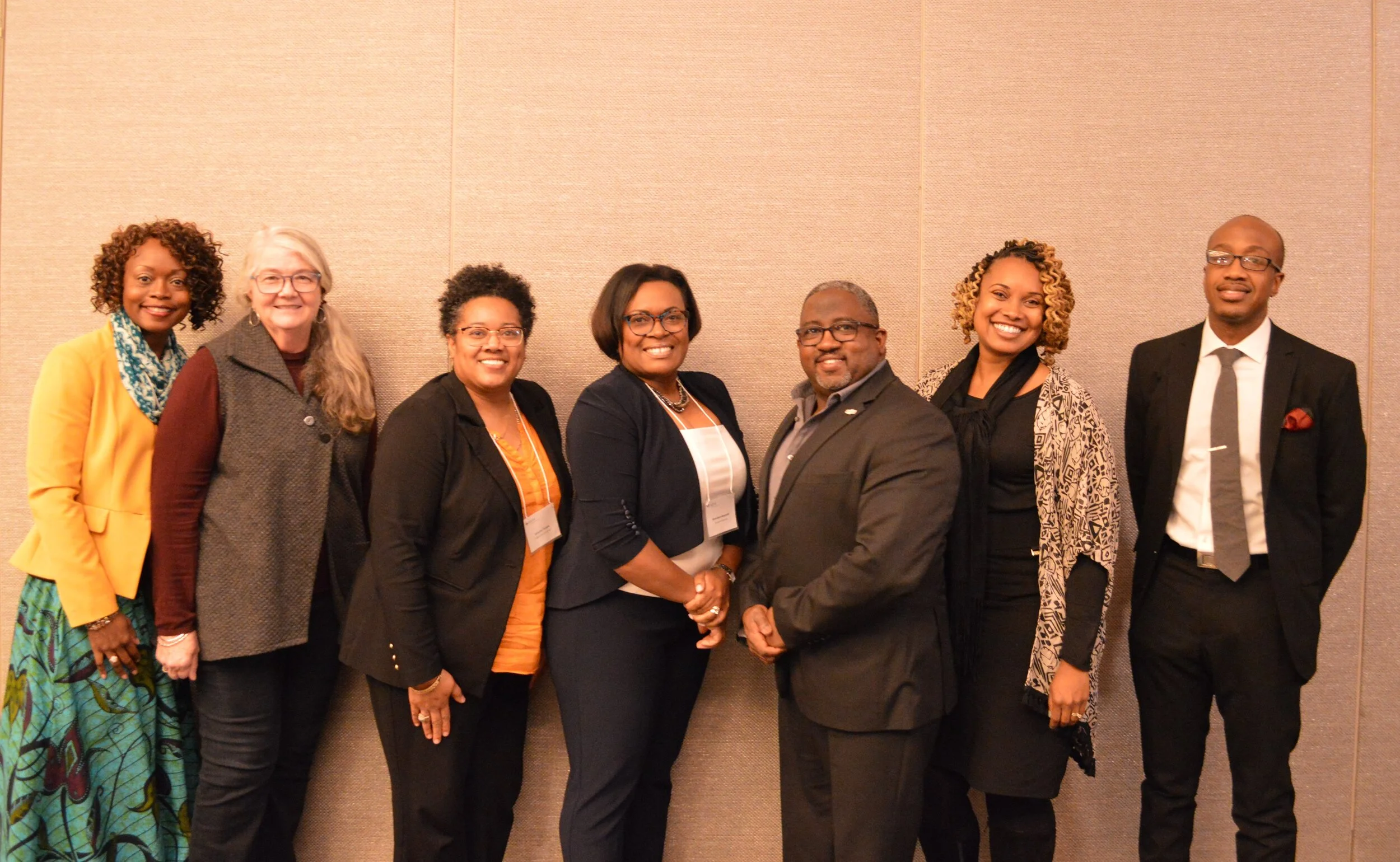Conference Presentations in Fall 2019
Dr. Daniella Cook and Dr. Mary Kay Delaney (project supporters from UNC at Chapel Hill), Latorial Faison, Gretchen Generett, Kawachi Clemons, Kristal Moore Clemons, Joshua Kondwani Wright
The Virginia Interscholastic Association (VIA) research and dissemination has made great strides this year. In the spirit of the original VIA, there is a highly effective collaboration among scholars across various institutions committed to documenting and sharing the history of the VIA.
The scholars are:
Joshua Kondwani Wright, Associate Professor, Global Affairs, Trinity Washington University
Gretchen Givens Generett, Professor, Educational Foundations and Leadership, Duquesne University
Kristal Moore Clemons, Assistant Professor, Educational Leadership, Virginia State University
Latorial Faison, Doctoral Student, Virginia State University
They also collaborate with Kawachi Clemons, Associate Vice President for Academic Affairs at Virginia State University (VSU).
The scholars are currently working to enhance the VIA archives at VSU by collecting interviews with former participants of the VIA including administrators, teachers, students, parents, and community members.
The scholars are coordinating interviews conducted by professors and students at the graduate and undergraduate levels. When their students conduct the interviews with VIA alumni, they come back sharing that they have learned lessons from the schooling during the VIA era that can be applied to the schools they work in today. Therefore, VIA continues to influence education.
The scholars submitted two proposals to present at 2019 national conferences. Both proposals were selected in a highly competitive process and presented this fall. They were:
Association for the Study of African American Life and History (ASALH), Charleston, SC, Oct. 3, “Tell Them We Are Rising”: An Oral History of the Virginia Interscholastic Association, 1954-1970
American Educational Studies Association (AESA), Baltimore, MD, Nov. 1, “Fostering Leadership, Followership and Scholarship”: Historical Ethnographies of the Virginia Interscholastic Association 1954-1970
In the conference sessions, they “shared interviews collected from the process that connects the VIA students’ experiences to the social realities of the Jim Crow era. The panelists discussed how the VIA equipped students to navigate the changing social milieu in America. They described how most interviewees flourished as they migrated to cities, states and regions beyond their high school communities.”
